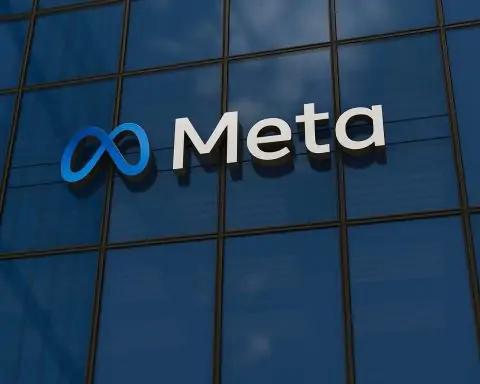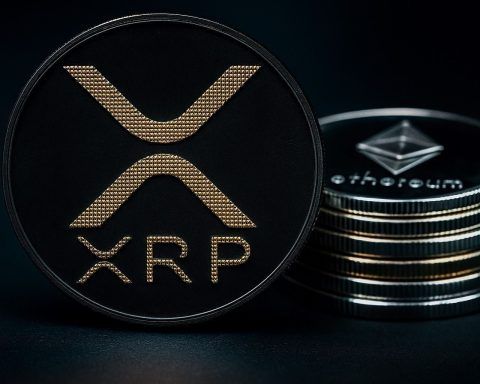- Price (Oct 31, 2025): ~$109,000 USD (≈€94K, £83.5K, ¥16.95M) [1] [2]. Bitcoin hit a record $126,223 on Oct. 5, then fell ~15% to ~$104.8K by Oct. 10 [3].
- Mid-October Crash: A surprise tariff announcement by President Trump (100% duties on Chinese imports) on Oct. 10 triggered a sharp risk-off, sparking a $19B+ liquidation of leveraged crypto positions (the largest ever) [4]. This sent crypto markets into “Extreme Fear” (Fear & Greed index < 25) before partial recovery.
- Fed & Macro: On Oct. 29, the Fed cut rates 25 bps to 3.75–4.00%, as expected, but Chair Powell warned that further cuts are “far from guaranteed” [5]. The stronger-than-expected Fed stance and a firming U.S. dollar weighed on risk assets. Bitcoin briefly dipped ~3% to ~$107K following the announcement [6], erasing some of “Uptober” gains.
- ETF Flows: Early October saw record inflows (~$5.95B) into crypto ETFs (about $3.5B into Bitcoin funds) [7], fueling the rally. Bitcoin ETFs now hold over $100B (BlackRock’s IBIT ≈$100B) [8]. However, mid-month brought the first sizable outflows (≈$536M on Oct. 16 [9], and about $488M on Oct. 30 [10]). Overall, October still shows net positive ETF flows (~$3–4B) [11].
- Market Metrics: Total crypto market cap is around $3.7–3.8 trillion (down ~2% on Oct. 31) [12]. Bitcoin’s dominance is roughly 50–55%. Ethereum remains the largest altcoin (~$450B market cap), trading near $3.8–4.0K [13] (about 20–30% below its Aug peak ~$5K). Other major coins: Solana ≈$195, XRP ≈$2.62 [14]. Many smaller altcoins saw steeper slides (e.g. Avalanche and Dogecoin fell ~60–70% from early-Oct highs) [15]. The Crypto Fear & Greed Index has normalized to the “Fear” zone (≈30/100) after bouncing from Extreme Fear [16].
- Expert Outlook: Analysts’ forecasts diverge sharply. Bullish targets range from ~$130K (Citigroup) to $180–200K by year-end [17] [18]. Standard Chartered, for example, still projects ≈$200K [19]. Bearish scenarios include Ledn’s Jon Glover predicting a $70–80K “new bear market” [20] and even Citigroup warning of a drop to ~$83K under a severe recession scenario [21].
Current Price & Market Snapshot
Bitcoin (BTC) is trading around $109,000 USD on Oct. 31, 2025 [22], which translates to roughly €94,000 and ¥16.95 million as of today. The price is ~13% below the Oct. 5 peak of $126.2K [23]. The chart below shows the decade-long trend: repeated boom-bust cycles culminating in late-2024 and 2025 rallies. Bitcoin/USD price chart (2016–Oct 2025) highlighting major peaks and troughs. Data source: LSEG/Reuters. The overall crypto market cap stands near $3.7–3.8 trillion [24]. Despite recent volatility, crypto has seen strong institutional support: ~172 public companies hold over 1.02 million BTC (~5% of supply) worth $117 billion [25]. In the U.S., roughly $100B is managed by spot Bitcoin ETFs (BlackRock’s IBIT alone ~$100B) [26], making Bitcoin’s exchange-traded volume comparable to major tech stocks.
| Currency | BTC Price (Oct 31, 2025) |
|---|---|
| USD | $109,449 [27] |
| EUR | ≈€94,000 (≈$109K×0.86) |
| GBP | £83,532 [28] |
| JPY | ¥16,952,298 [29] |
Major currency conversions for 1 BTC. USD price from RBC Crypto [30]; GBP from CoinGecko [31]; JPY from bitFlyer (Investing.com) [32].
Technical Analysis & Price Chart
After the early-October surge, Bitcoin’s chart shows a classic bull-flag pattern and key support around $107–$110K. Analysts at Glassnode note that $107K–$117K is a critical zone: “failure to hold this key level raises the risk of a deeper correction” [33]. On daily indicators, momentum cooled in mid-month but is stabilizing. Trade Nation’s David Morrison observed that BTC’s daily MACD has turned up sharply after the pullback, though “it may need to consolidate” before resuming a fresh rally [34]. Support levels to watch include $105–108K (psychological/previous high), while resistance sits near the Oct 6 peak (~$126K) and the mid-September top (~$125K). Recent volatility remains high (Oct. 2025’s 30-day realized volatility was above long-term averages), but on-balance-volume (OBV) suggests continued institutional accumulation [35].
Historical Bitcoin price chart (USD) shows major peaks (late 2017, 2021, 2024–2025) and crashes (2018, 2022, Oct 2025). Technical analysts highlight the $107–117K region (grey band) as critical support [36].
October 2025 News & Market Drivers
- Trade War Shock (Oct 10) – Bitcoin’s dramatic mid-month crash was ignited by geopolitical news. On Oct. 10, President Trump announced a sudden 100% tariff on all Chinese imports, triggering a broad sell-off in risk assets. Bitcoin plunged from ~$125K to below $105K in one day [37] [38], wiping out over $19B in crypto leverage (record liquidation) [39]. This “tariff scare” flipped the crypto Fear & Greed index to Extreme Fear (<25) [40]. By contrast, in late October trade rhetoric improved: a meeting between Trump and China’s Xi on Oct. 30 hinted at easing tensions [41], which helped risk markets (and Bitcoin) recover from lows.
- Fed Rate Cut (Oct 29) – The U.S. Federal Reserve cut rates by 25 basis points on Oct. 29 (to 3.75–4.00%) [42]. The cut was widely expected, so its market impact was muted. Bitcoin dipped ~3% on the news [43] but quickly recovered. However, Fed Chair Powell’s press conference was key: he cautioned that future cuts are “far from guaranteed” [44]. In practice, this hawkish undertone (plus a brief U.S. government shutdown risk) kept the U.S. dollar firm. Bloomberg reported BTC falling 3.2% to below $107K in the hours after Powell’s comments [45], underscoring crypto’s sensitivity to monetary policy. Overall, October’s Fed pivot (the second cut of the year) was a mixed blessing for Bitcoin: it added some short-term support but also removed the “free money” narrative, contributing to recent price consolidation.
- Bitcoin Options Expiry (Oct 31) – A massive derivatives event was unfolding: $16+ billion of Bitcoin and Ethereum options were set to expire on Oct 31 [46]. According to Phemex, about $13.6B of BTC options (and $3.0B ETH) expire today, with “max pain” around $114K [47]. Such expirations often induce volatility as traders hedge or unwind positions. Markets were braced for large swings: heavy put-buying at strikes $115K and $95K suggests traders expecting either side moves. The Phemex report noted that BTC’s key short-term resistance is around $116K–$118K, with support near $112K [48]. These technical levels align with Glassnode’s flagged zone.
- ETF Flows & Institutional Demand – Spot Bitcoin ETFs continue to inject huge capital. As of early October, crypto funds saw nearly $6 billion of inflows in a single week (around $3.5B into BTC ETFs) [49], helping fuel the Oct 5 rally to $126K. October’s net ETF inflows remain strongly positive (over $3B) despite some late-week outflows. For example, SoSoValue data (reported by RBC Crypto) show roughly $488M outflow from BTC ETFs on Oct 30, but inflows of $3.61B since Oct. 1 [50]. Coinbase’s volatility team even forecasted BTC hitting $150K by year-end in late October, reflecting bullish institutional sentiment. Industry commentators like James Butterfill (CoinShares) noted that this torrent of investment “highlights the growing recognition of digital assets as an investable asset class” [51]. Likewise, Deutsche Bank predicted Bitcoin could someday be held on central banks’ balance sheets (by 2030) [52], reflecting how mainstream the asset has become.
- Regulation & New Products – The U.S. regulatory stance remains crypto-friendly. In early 2025 the SEC approved the first spot-Bitcoin ETFs, and in October additional altcoin ETFs launched. For instance, Canary Capital launched the first U.S. spot ETFs on Litecoin and Hedera, and Bitwise introduced a Solana ETF [53]. Bitwise CEO Hunter Horsley praised the environment, calling the outlook “never been more constructive” due to a new SEC crypto task force led by chair Paul Atkins [54]. Internationally, countries like Switzerland and Germany also saw record crypto-ETF flows this fall [55]. Meanwhile, companies are adding Bitcoin to their treasuries: over 170 firms now hold more than 1 BTC each, totaling ~1.02M BTC [56] [57]. All these factors – more ETF products, steady inflows, and corporate buying – have underpinned Bitcoin’s long-term bull thesis despite short-term volatility.
Expert Perspectives
Crypto analysts and investors offer contrasting views. James Butterfill of CoinShares observed that the recent ETF inflows “highlight[] the growing recognition of digital assets” in mainstream portfolios [58]. TradeNation analyst David Morrison noted that after the October dip Bitcoin’s MACD indicator has turned up sharply, suggesting renewed bullish momentum – though he cautioned BTC “may need to consolidate” at these levels before breaking higher [59]. On the bearish side, Glassnode research warns that slipping below ~$107K–$117K could trigger deeper losses: “failure to hold this key level increases the risk of a deeper correction” [60]. Ledn’s Chief Investment Officer Jon Glover, applying Elliott-wave analysis, has gone further – bluntly declaring “THE BULL RUN IN BITCOIN IS OVER” [61]. Glover predicts BTC could drop into the $70–80K range over the coming months [62], seeing the five-wave ascent since 2022 as complete. By contrast, some traders remain bullish on dips: Amber Group’s Annabelle Huang has advised that any pullback below $100K is a “buy” opportunity [63], reflecting optimism that strong demand will absorb selling.
Market Outlook & Forecasts
Looking ahead, forecasts diverge widely. Bullish scenarios assume continued ETF/treasury buying and favorable macro: Standard Chartered analysts still target ~$200,000 BTC by year-end [64], and Citigroup’s research models roughly $133K (with a bull case around $180K) [65]. Crypto manager Robert Kiyosaki has even mused on $200K-plus targets by end-2025 [66]. VanEck analysts reiterated a $180K year-end forecast in mid-October [67], arguing that October’s pullback sets the stage for a final rally if Q4 ETF inflows persist. Most bullish outlooks hinge on BTC reclaiming $120K–$125K resistance soon and then charging toward new highs.
By contrast, bearish scenarios cite potential macro headwinds. Apart from Glover’s $70–80K call, even Citigroup models warn that a severe economic downturn or policy tightening could drag Bitcoin down to the $80–85K area [68]. Veteran investor Robert Kiyosaki has warned of a “massive crash” in crypto, though he still recommends holding Bitcoin as a hedge. The coming weeks will test these views: key factors include whether BTC can hold above ~$105K–$110K support and how global risks (e.g. inflation, geopolitical events) evolve. For now, analysts expect high volatility to continue.
Altcoins & Broader Crypto Trends
The altcoin market largely mirrored Bitcoin’s swings. Ethereum (ETH), the second-largest crypto, trades near $3.8–3.9K after falling from a late-August peak near $5K [69]. Investors have rotated capital into ETH and other large altcoins during Bitcoin’s drawdown. Indeed, Ethereum ETFs saw net inflows (~$668M in Oct) [70]. Solana (SOL) has hovered around $190–200 following a strong summer, and small-cap tokens (like Hedera’s HBAR) even spiked on ETF-related news [71]. Overall, the total crypto market cap (~$3.7T) is near year-to-date highs after recovering ~5% in the past week [72], fueled by renewed trade-deal optimism and fading fears. Bitcoin’s dominance is roughly half of total cap.
Looking at the ecosystem, institutional involvement continues to deepen. Firms like MicroStrategy, Tesla, and financial giants are locked in as long-term holders, contributing to structural demand. On-chain metrics show over 95% of circulating BTC supply is “in profit” given current prices [73], which some analysts view as a sign markets may consolidate before the next leg up. At the same time, on-chain analytics note rising activity in “long-term holders” (addresses dormant 6+ months) selling into these highs – a pattern that could add supply pressure [74].
In summary, October has proven the adage that crypto is still highly volatile. After October’s extremes, many traders are watching key levels ($105K, $120K, etc.) and expiration dates for clues. The mix of powerful tailwinds (ETF adoption, weakening dollar) and headwinds (Fed caution, macro uncertainty) means a battle between bulls and bears in Q4. With options expiry, economic data, and political events on the horizon, Bitcoin’s next major move – up or down – will likely hinge on which side finds conviction first.
Sources: Authoritative crypto and market media (Reuters, Bloomberg, Coindesk), TS2.tech analysis, and leading industry reports [75] [76] [77] [78] [79].
References
1. www.rbc.ru, 2. www.investing.com, 3. ts2.tech, 4. ts2.tech, 5. www.investopedia.com, 6. www.bloomberg.com, 7. ts2.tech, 8. ts2.tech, 9. www.coindesk.com, 10. www.rbc.ru, 11. www.rbc.ru, 12. phemex.com, 13. phemex.com, 14. ts2.tech, 15. ts2.tech, 16. ts2.tech, 17. ts2.tech, 18. ts2.tech, 19. ts2.tech, 20. economictimes.indiatimes.com, 21. ts2.tech, 22. www.rbc.ru, 23. ts2.tech, 24. phemex.com, 25. ts2.tech, 26. ts2.tech, 27. www.rbc.ru, 28. www.coingecko.com, 29. www.investing.com, 30. www.rbc.ru, 31. www.coingecko.com, 32. www.investing.com, 33. www.rbc.ru, 34. www.reuters.com, 35. www.financemagnates.com, 36. www.rbc.ru, 37. ts2.tech, 38. ts2.tech, 39. ts2.tech, 40. ts2.tech, 41. ts2.tech, 42. www.investopedia.com, 43. ts2.tech, 44. www.investopedia.com, 45. www.bloomberg.com, 46. phemex.com, 47. phemex.com, 48. phemex.com, 49. ts2.tech, 50. www.rbc.ru, 51. www.reuters.com, 52. www.reuters.com, 53. ts2.tech, 54. ts2.tech, 55. ts2.tech, 56. ts2.tech, 57. ts2.tech, 58. www.reuters.com, 59. www.reuters.com, 60. www.rbc.ru, 61. economictimes.indiatimes.com, 62. economictimes.indiatimes.com, 63. ts2.tech, 64. ts2.tech, 65. ts2.tech, 66. ts2.tech, 67. www.financemagnates.com, 68. ts2.tech, 69. phemex.com, 70. www.rbc.ru, 71. ts2.tech, 72. ts2.tech, 73. cryptobriefing.com, 74. www.rbc.ru, 75. ts2.tech, 76. www.reuters.com, 77. ts2.tech, 78. www.bloomberg.com, 79. phemex.com










